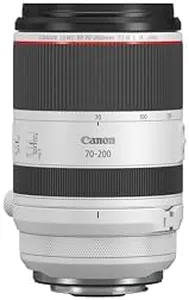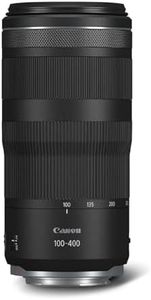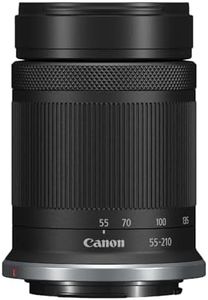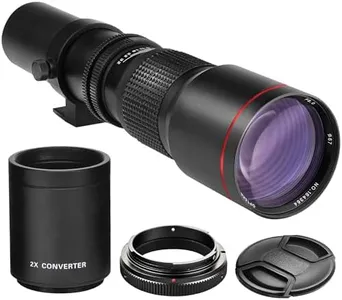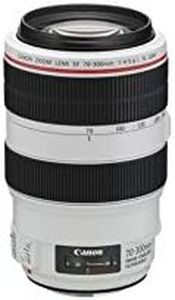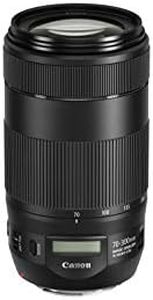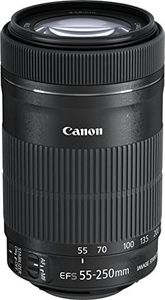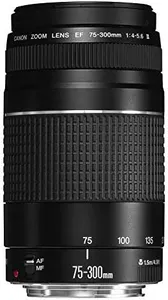We Use CookiesWe use cookies to enhance the security, performance,
functionality and for analytical and promotional activities. By continuing to browse this site you
are agreeing to our privacy policy
10 Best Canon Lens For Sports
From leading brands and best sellers available on the web.Buying Guide for the Best Canon Lens For Sports
Choosing the right lens for sports photography is all about capturing fast action with sharpness and clarity, even when your subjects are moving quickly or are far away. In sports, lighting can be unpredictable, and you may need to shoot from a distance, so understanding how different lens features impact your results is important. Consider the types of sports you want to photograph, the typical lighting conditions (outdoors or indoors), and your camera body’s compatibility with different lenses. Your goal is to find a lens that helps you freeze the action, get close to the subject, and deliver crisp images regardless of the environment.Focal LengthFocal length describes how 'zoomed in' a lens can get and is measured in millimeters. For sports photography, longer focal lengths (telephoto lenses) let you photograph subjects that are far away, which is often the case in stadiums or arenas. Lenses with focal lengths around 70-200mm are considered versatile for many types of sports, allowing you to cover sidelines or even closer action, while super-telephoto lenses of 300mm or more are best for sports where you are positioned far from the action, such as field sports or wildlife. If you mainly shoot indoor sports or have access close to the subject, shorter focal lengths may suffice. Think about how close you can get to your subjects and choose a focal length that brings them into proper framing.
Aperture (Maximum f/Number)Aperture is indicated by the f/number and controls how much light the lens lets through to the camera. A lower f/number, such as f/2.8, means the lens can open wide and let in more light, which is great for freezing fast motion in lower-light situations, like indoor arenas or evening games. It also helps create a blurry background, making your subject stand out. Lenses with constant wide apertures (like f/2.8 across all zoom ranges) are especially valued in sports but tend to be larger and heavier. If you shoot mainly outdoors in bright light, you may manage with a lens with a smaller maximum aperture (higher f/number). Match the aperture to the lighting conditions you expect and how much background blur you want.
Autofocus Speed and AccuracyFor sports photography, quick and accurate autofocus is critical, as your subjects are constantly on the move. Lens specs might mention advanced autofocus motors or technologies which help the lens refocus rapidly and silently. If you shoot fast-paced sports, you’ll need a lens that tracks moving subjects reliably without hunting for focus. Reading reviews or trying out lenses in-store can help you gauge real-world performance. If you mainly photograph slower, more predictable movement, this spec is less critical.
Image StabilizationImage stabilization helps reduce the blur that comes from shaking hands or small movements when you’re holding the lens, especially at longer focal lengths or slower shutter speeds. This is especially helpful when shooting handheld, as it allows for sharper images in environments where you can’t use a tripod or when shooting late in the day. However, if you always use a high shutter speed or a tripod, or if your camera has built-in stabilization, this may be less important. Think about your typical shooting style—handheld versus tripod—and the lighting conditions to decide if this feature matters for you.
Lens Weight and SizeSports lenses, especially telephoto ones with wide apertures, can get heavy and large. Consider how long you can comfortably hold and carry the lens, especially if you’ll be at events for hours. Lighter, smaller lenses are easier to handle and move, but may sacrifice some features like aperture or reach. If you plan long shoots or need to move quickly between locations, a lighter lens might be better. If you shoot from one spot and prioritize image quality or need extra reach, you may tolerate more size and weight.
Lens Mount CompatibilityNot all Canon lenses fit every Canon camera—different cameras use different mounts (like EF, RF, or EF-S). It’s important to make sure the lens you choose is fully compatible with your camera, both mechanically and electronically. Some adapters are available, but for the best performance, use a lens made for your specific system. Always check your camera’s mount before buying a lens.

